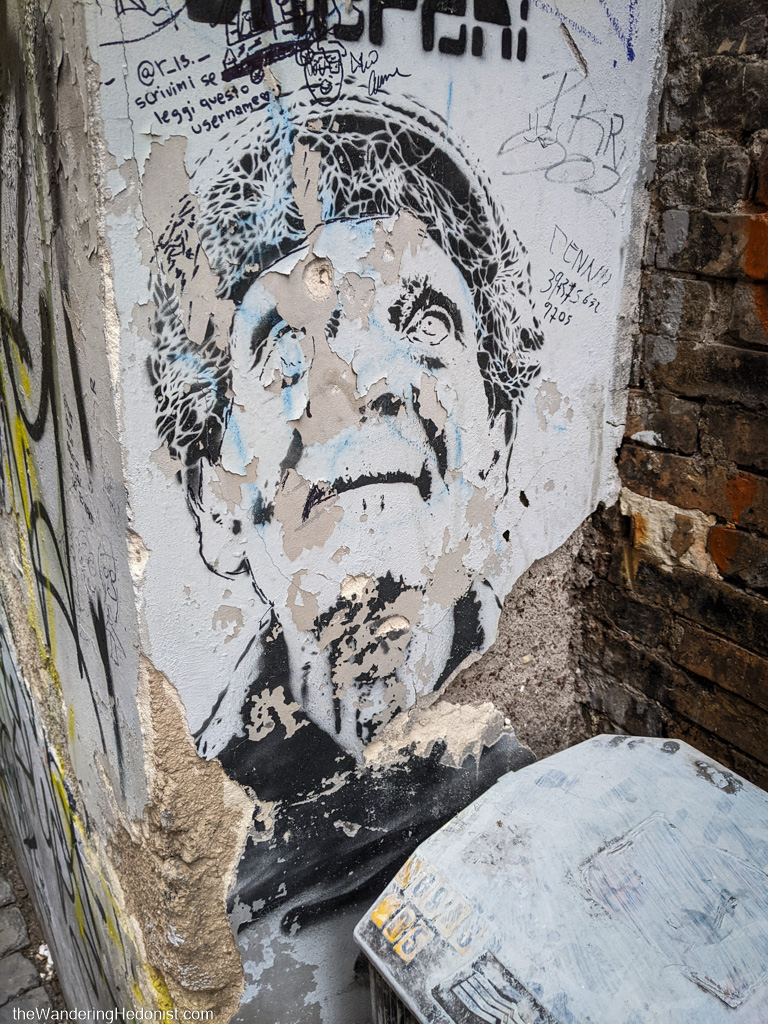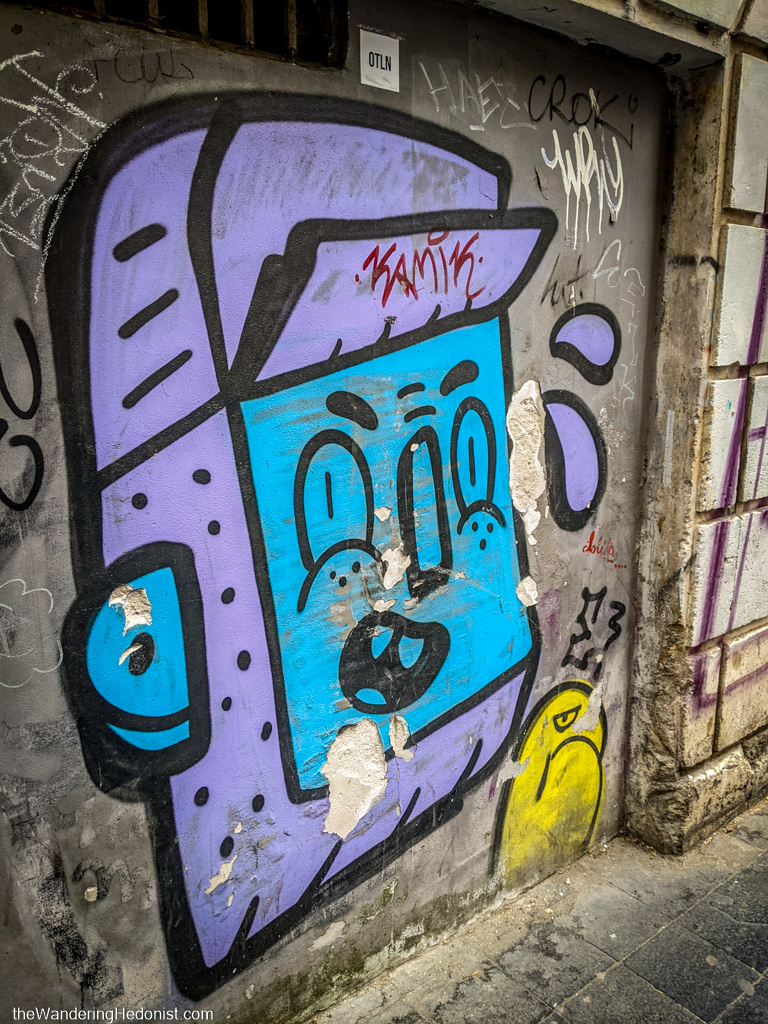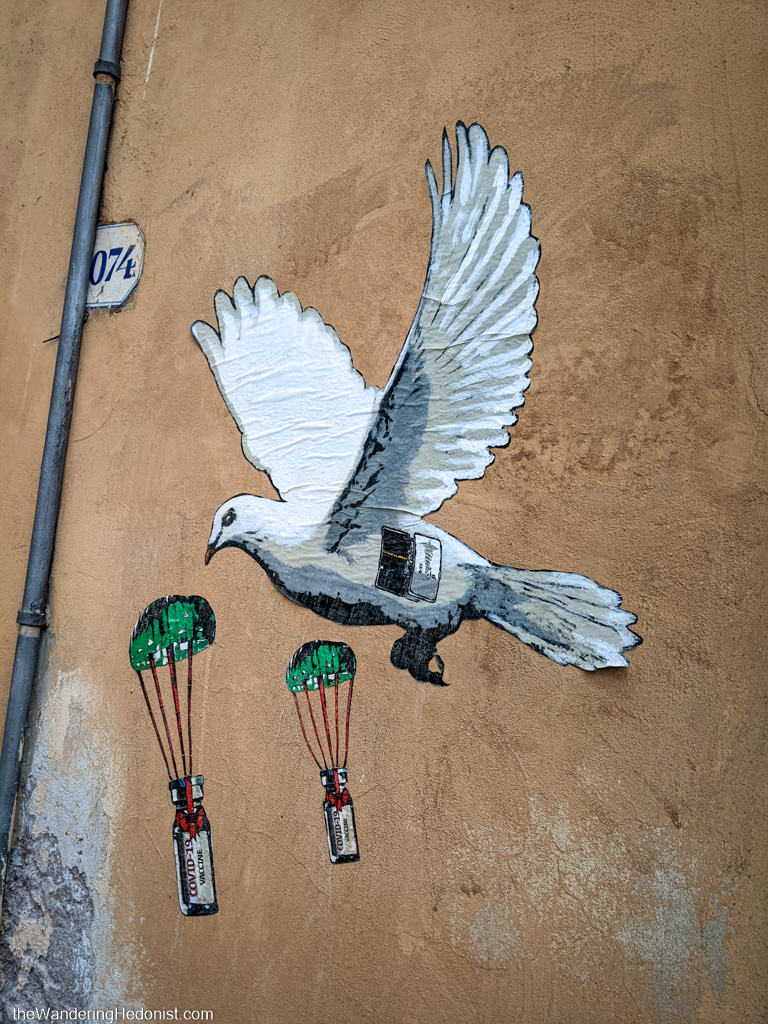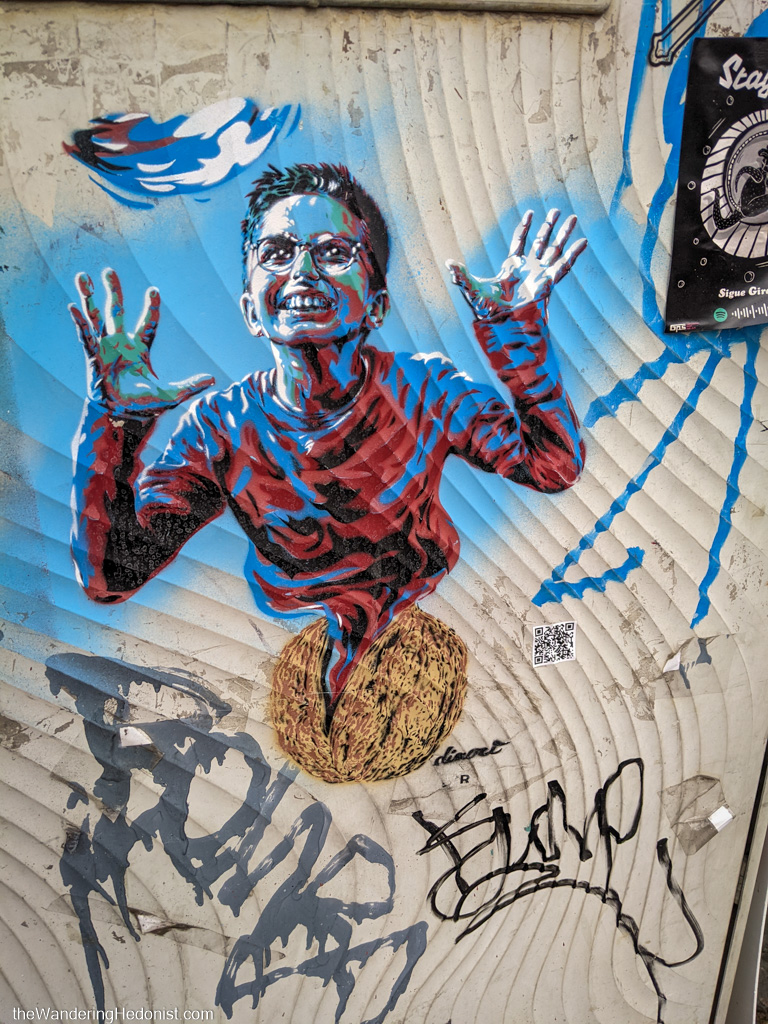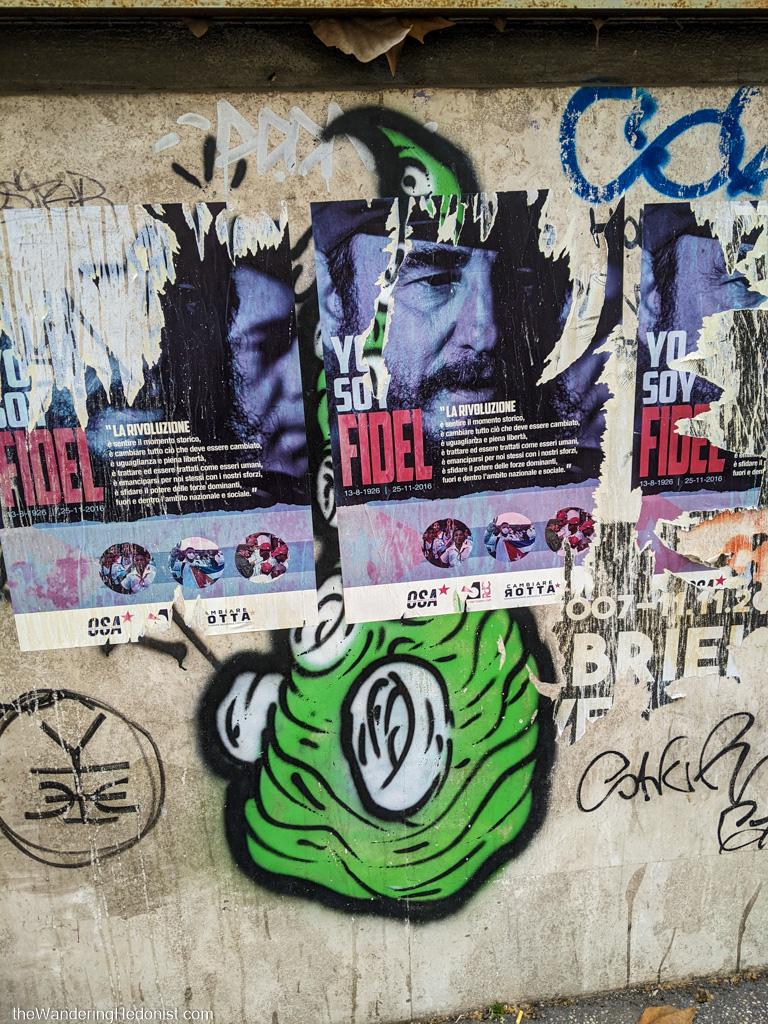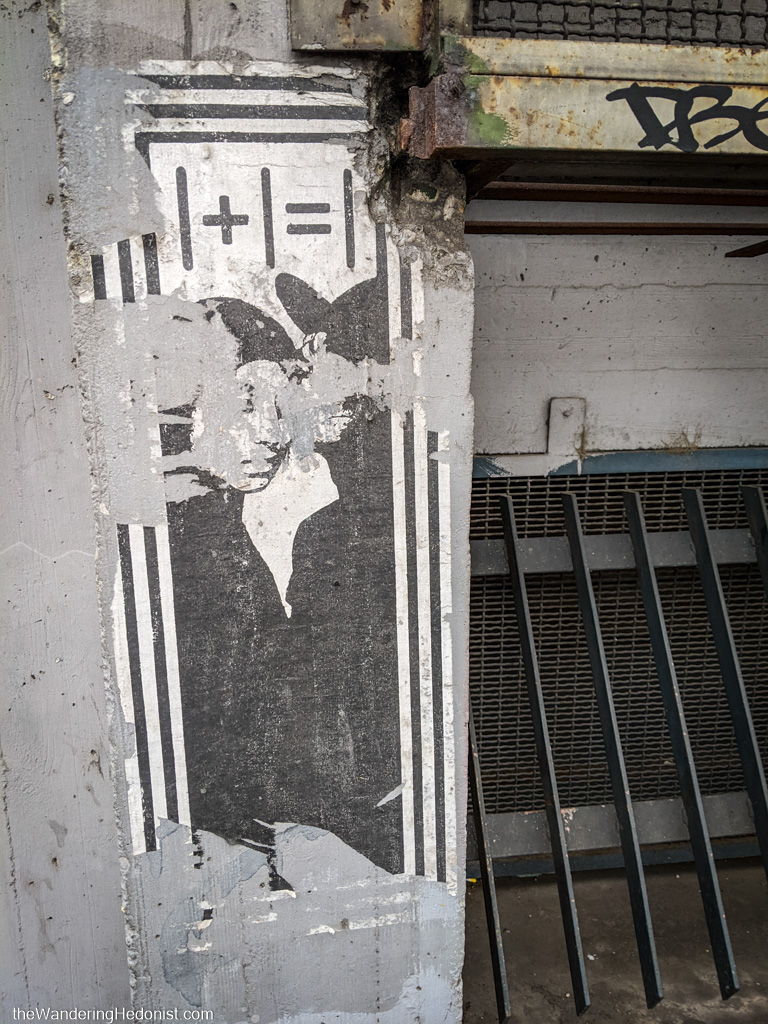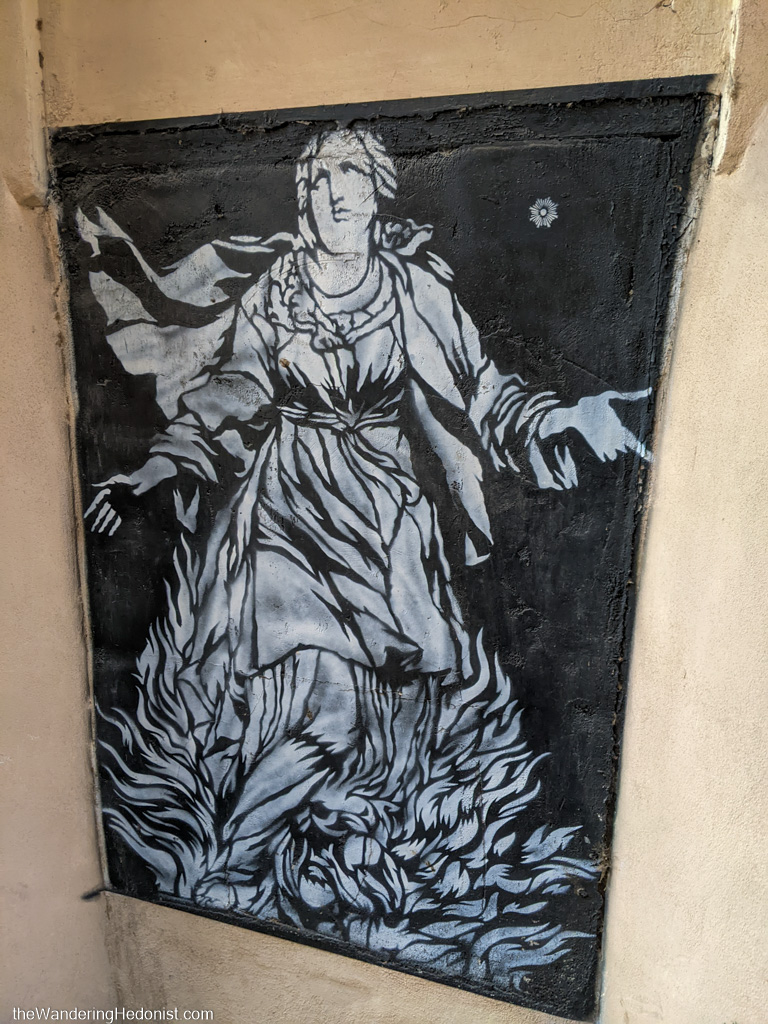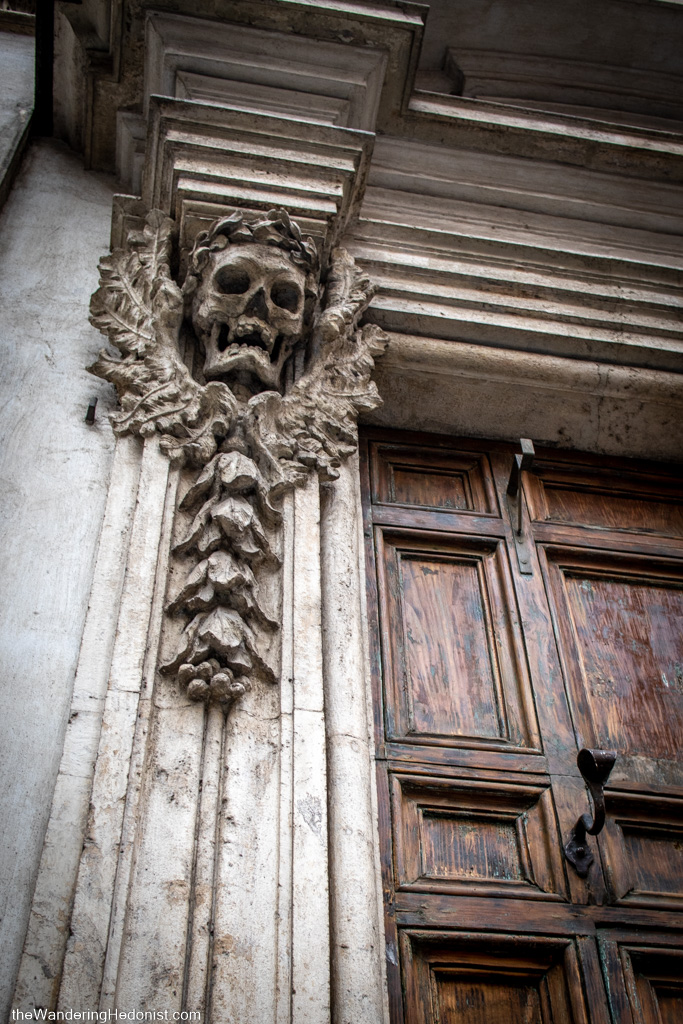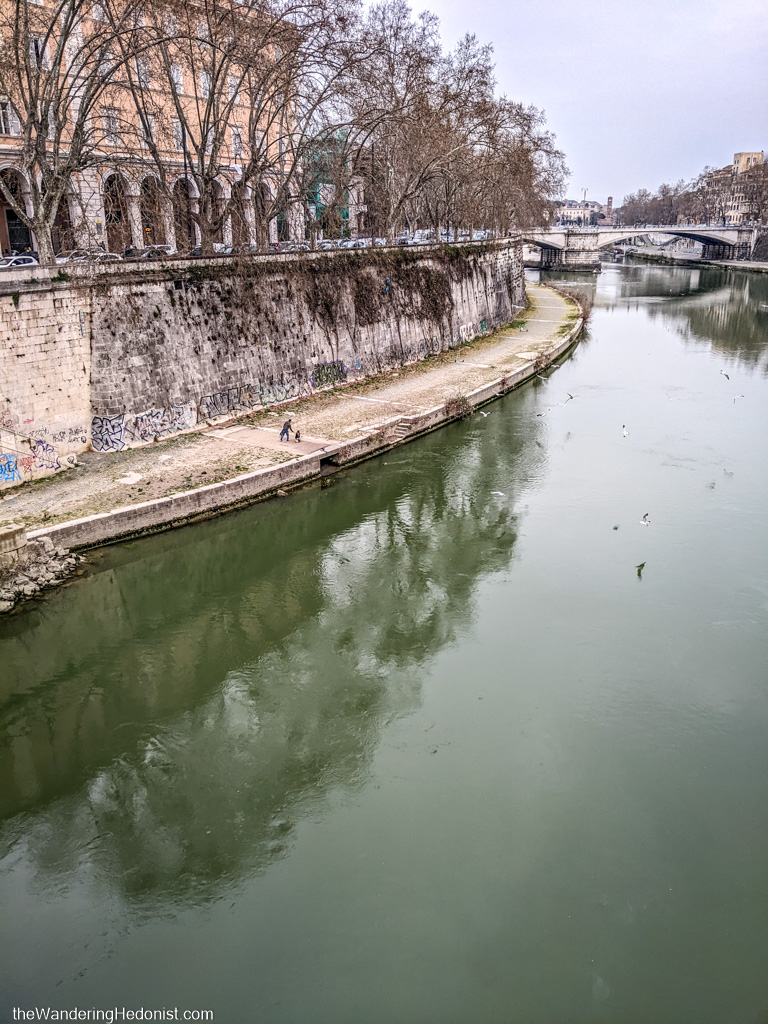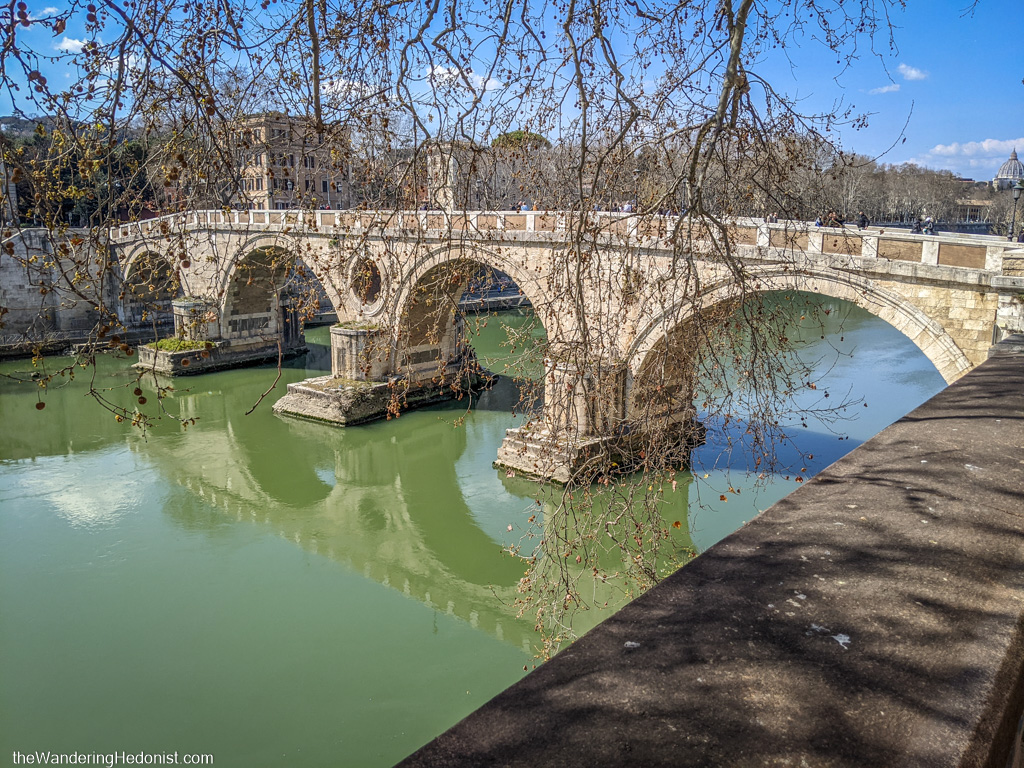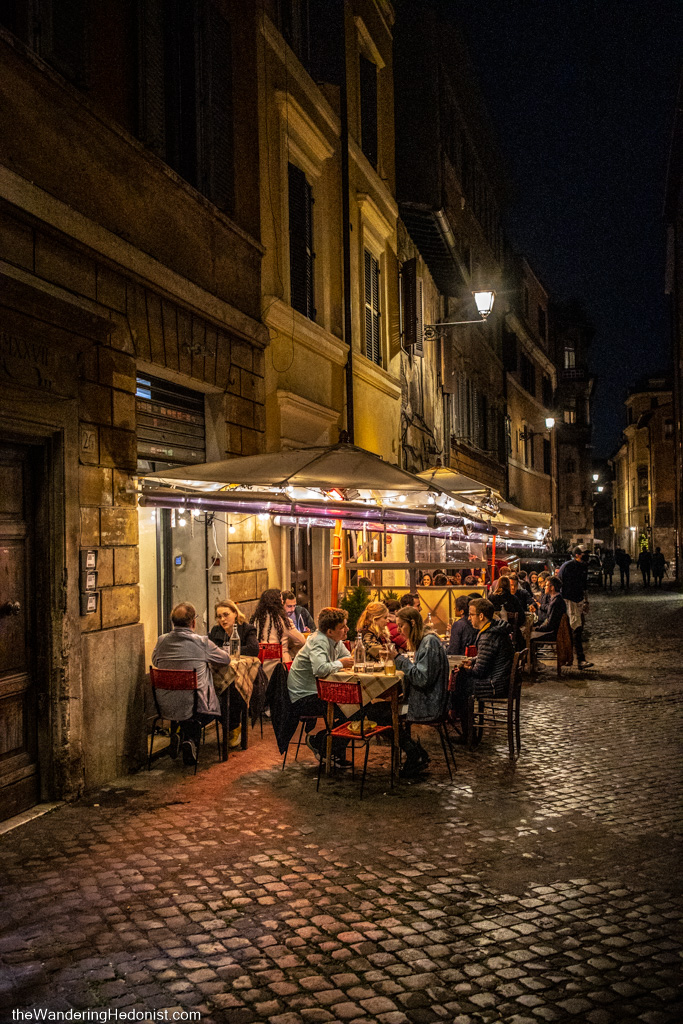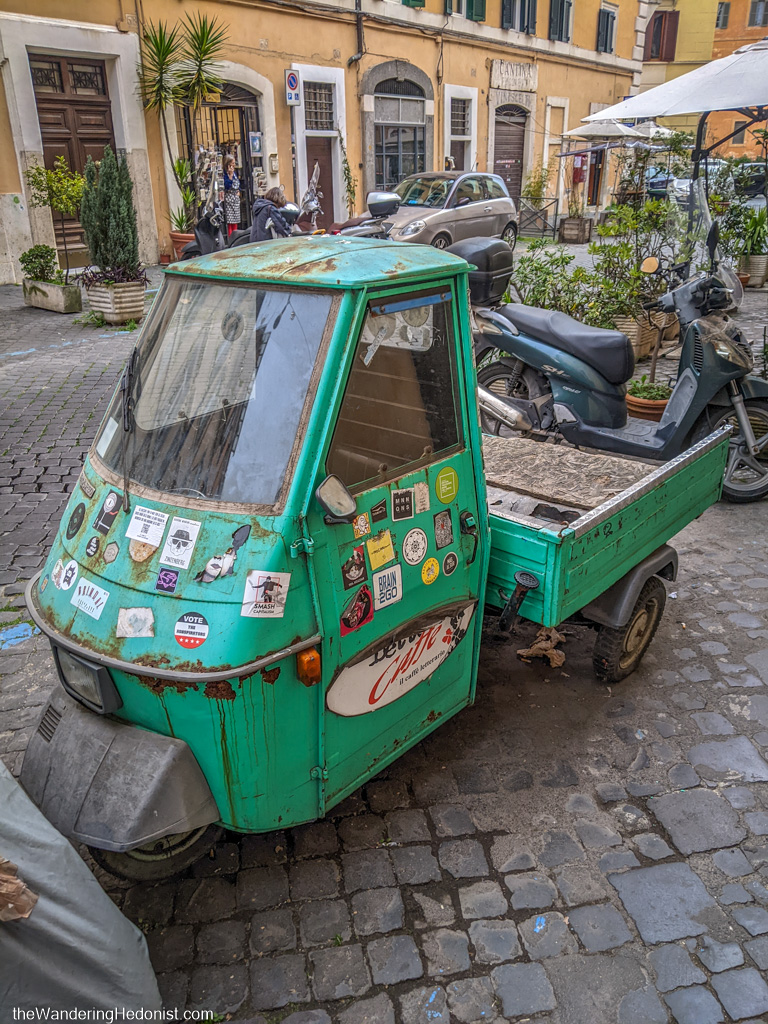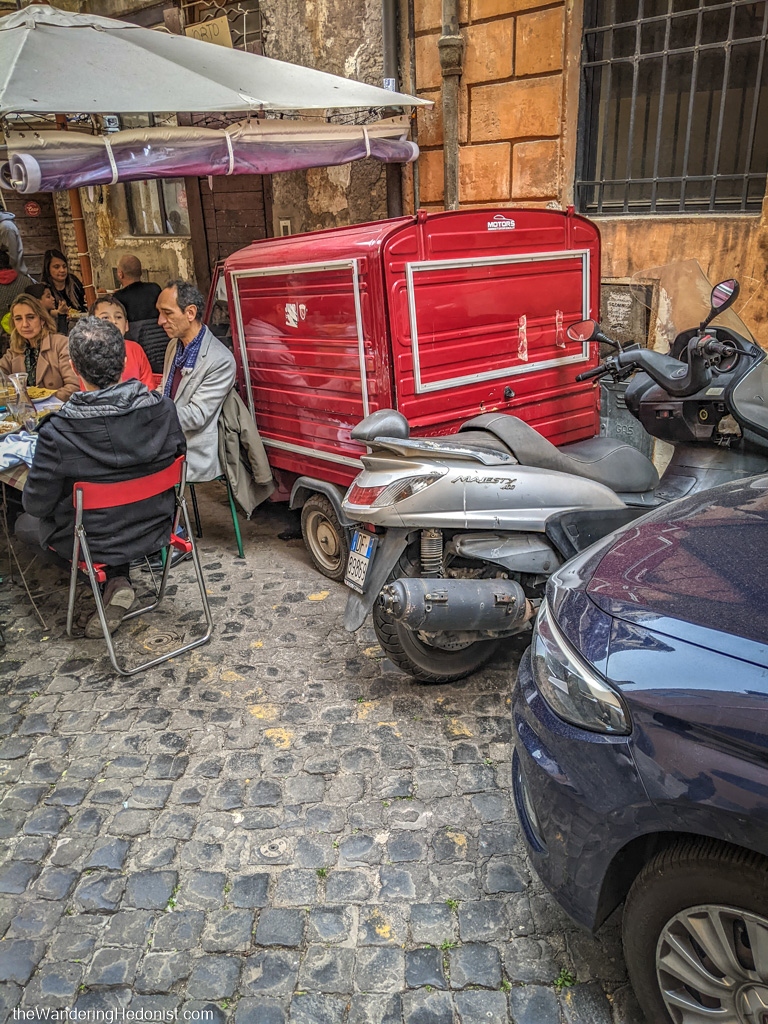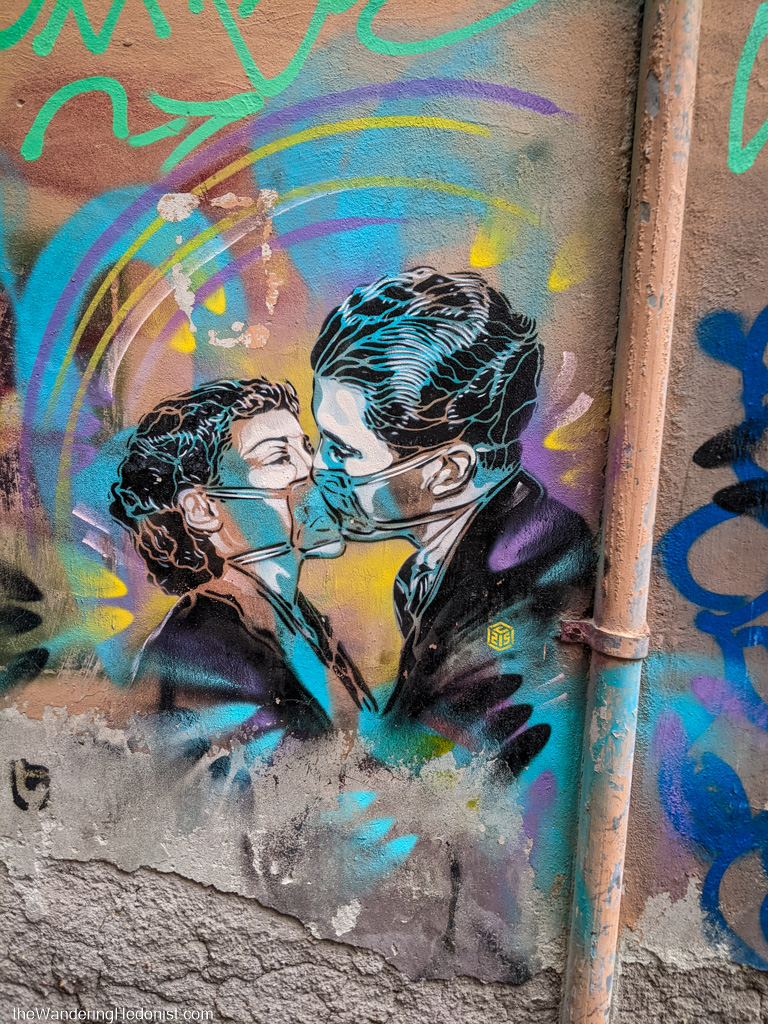Rome, according to legend, was founded by Romulus, the child of a vestal virgin raped by Mars, then condemned to death along with his twin brother Remus by drowning in the Tiber River. Fortunately their executioner was not detail oriented and he left them on the riverbank to die from exposure. Then a wolf-mother came along and instead of eating them, suckled them like wild animals until they could be found by shepherds, grew up, and overthrew the the King that sentenced them, returned the power to their grandfather, the true King. When Remus disagreed with Romulus’ chosen location for Rome, he murdered him, then began to build the city. Being newly populated by mostly vagabonds, Romulus threw a party, inviting the local communities. Then once everyone was there, he gave the signal and the new Romans snatched up and raped any attractive women they liked, particularly the Sabines. Hence, the founding of Rome.
This is the mythical founding story. And it kind of sets the tone for Western expansion all the way to the framing of my American highschool history books. There is something mythically Roman about America. Consciously Roman. The white stone neoclassical architecture that is still somehow wildly popular. The depictions of founding fathers in classically Roman styles. Not to mention the enormous amount of brutal conquest, enslavement, and rape on which our very society was founded and enabled. Not just initially but pretty much all the way through the historical arc until very recently.
The principles are glorified as ordained by a just and merciful god. The new god of the Romans that oversaw their collapse and ushered in the horrors of the dark ages. The Romans who created the Christian church and designed its power structure and hierarchy of wealth and spiritual monopoly, only after executing Jesus Christ himself, his followers, and making sport of torturing early Christians for centuries. The very symbol of Christ, the cross, and the brutal manor of his execution by which Christians define suffering and penance, was the commonplace day-to-day for Roman society and the crushing hand of Empire. Later defining the teachings of Christ by reframing them into the Bible and murdering anyone left over who might disagree with their version. The version that created the catholic church and the pope and enumerable genocides across the globe motivated vocally in the name of this new Roman god in one hand, but always, always, by booty, pillage, slavery, and brutal domination in the other. The Reconquista, the crusades, the western expansion to the “new worlds”, Africa, and Asia. These were the same pursuits of Rome and for the same god and for the same purpose. The unimaginable horrors of Rome. Rome. Rome.
The wild animal. The rapist. Rome.
Taking a step back, America seems deeply Roman. Even in its persecutions of the Italians that immigrated there later. Burning pagan witches in the name of the new Roman god.
Its so engrained that it becomes invisible. As a fine arts major in University I was required to take 3 years of art history. And as I recall it, we spent about the same amount of time discussing and learning about Roman pillars as we did the entire continent of Africa and all of the Oceanic cultures combined. One test on each of the two.
The mystique of Rome is so thick and constructed that it was hard for me to imagine being able to see it for what it really is. Just a city. With regular people. Living regular lives. Proud people with deep roots. The churn of overwhelmingly documented history on display but exactly the same amount of history as any other place in other part of the world less documented.
How would I ever begin to untangle that which is so foundational in my own myths of origin (even if somewhat compulsory)? I started with a simple bowl of pasta. Taking a walk through my neighborhood. Going to the market. And watching the sun set. Most truths are simple truths. And once you jettison all of the bullshit you start to see what’s in front of you. And it was worth seeing.
There was just too much to see in Rome and even what I did see in a week was way too much to capture in a single article, so I’ve decided to break Rome up into three articles. The first focusing on the Travestere and Regola neighborhoods on the Tiber, the second covering the Old Rome area with all the antiquities and the Vatican, and a third food specific article which can easily stand on its own.
Walking around the Regola neighborhood.
I wanted to stay in the old-world Trastevere neighborhood but ended up finding an apartment across the river right at the Ponte Sisto in the Regola neighborhood which turned out to be a blessing. Trastevere was mobbed with young revelers on the weekends while a minute away we could sleep in peace. Regola is the riverside neighborhood just north of the Colosseum area and all the ancient structures, west of the tourist choked Old Rome streets with the famous piazzas and fountains, and still only a short walk to the Vatican. So as a home base, this area was perfect. Lots of charming cobblestone squares, little shops and restaurants, and bits of magic hidden everywhere. But with much less tourists.
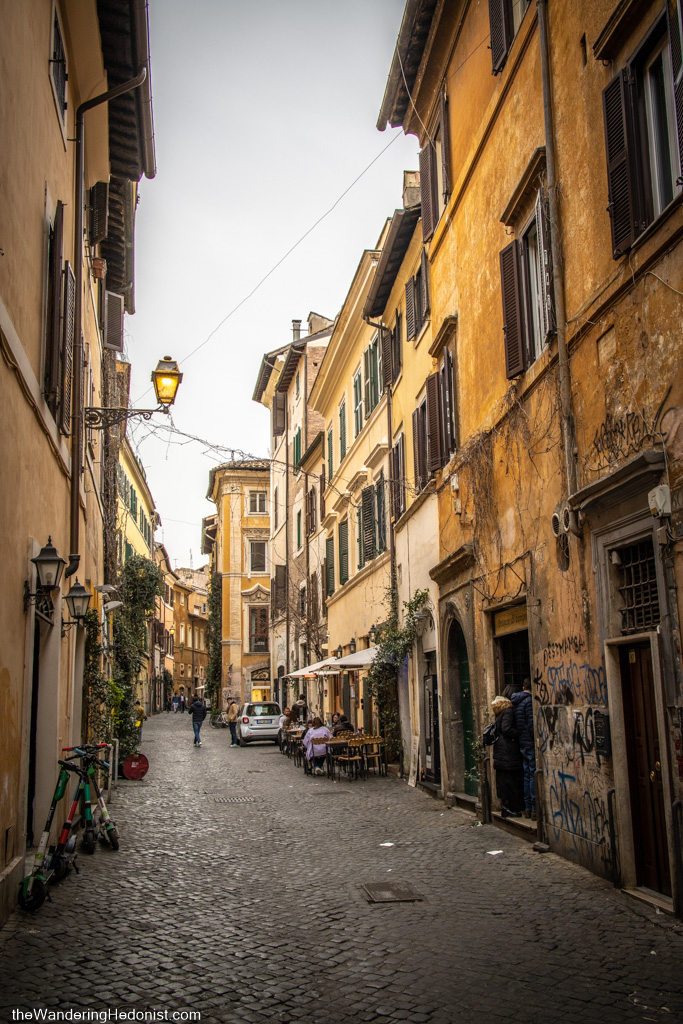



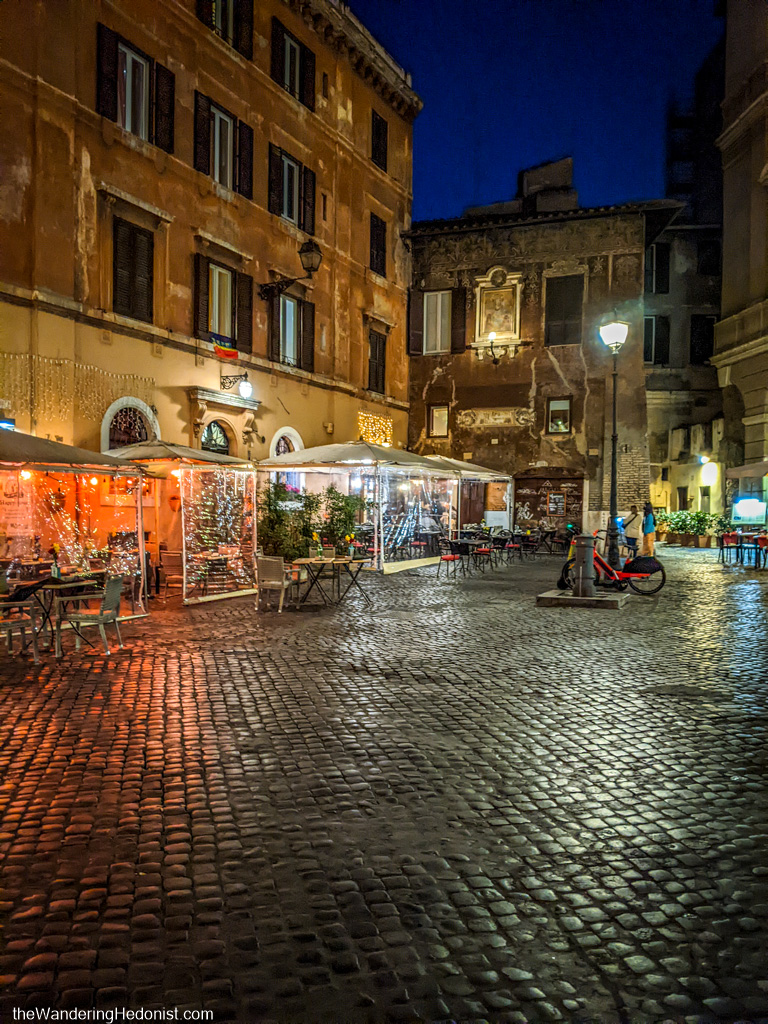


Church of St. Mary of the Oration and Death
For some reason Google believed our address was a couple of blocks north of its true location so the cab dropped us off under a full moon at Michelangelo’s Arco Farnese and the steps of the Church of St. Mary of the Oration and Death. Stone skulls loom over the church-doors and depictions of death are carved into the church’s façade with coin slots for donations. The church was built by a confraternity that volunteered responsibility for collecting and burying abandoned corpses in Rome, and housed over 8000 bodies in a series of crypts that stretched to the banks of the Tiber river. These crypts were destroyed in 1886 when Tiber river walls were constructed leaving only a single hypogaeum of two chambers, a chapel and its antechamber, which are rarely open to the public. These chambers feature stacks of bones, a bone chandelier, a bone cross and different bone decorations.
Chiesa della Santissima Trinità dei Pellegrini
I had to pass by this church to get to local squares and shops and decided to take a peak inside one day. The church was originally founded by a confraternity (the Fraternity of the Holy Trinity of Pilgrims and Convalescent) dedicated to housing pilgrims, especially pilgrims from far away, and for caring for the poor discharged from hospitals and hospice care. The church along with nearby buildings still function in this way.
The Tiber river
The Tiber river runs through Rome which emanates from its banks. Once an important shipping route and strategic waterway, today the Tiber is all but ignored by the city. Much of Rome sits within a flood plain and historic floods of over 6 feet were recorded in the city. So in 1886 the banks of the river were dug up and replaced by high walls throughout the city. Long cycling paths exist along both sides but honestly I didn’t see many people using the space. Where as in Vienna, the inner canal space is used very well with community gardens and social spaces, the Tiber banks are vacant and isolated. Conspicuously so, to the point where it felt a little strange to go down there.
Between the Travestere and Colosseum areas along the river sits Tiber Island, where once criminals and the contagiously ill were banished until a temple of Asclepius, the god of medicine, was built in 293BC. This island has since been associated with healing and still has a hospital there. During the Nazi occupation, doctors invented a fake contagious illness to hide Jews in the wards. The Ponte Fabricio bridge that connects the island to the east bank is the only surviving Roman bridge of antiquity, built in 62BC and has been in continuous use since.
Walking around the Trastevere neighborhood.
The Trastevere neighborhood (literally “beyond the Tiber river”) traditionally housed immigrant or non-citizen inhabitants of Rome who left the city at night and returned for work over the bridge. The area has resisted modernization and is a delightful tangle of narrow lanes, traditional trattorias, and hipper bars and hangouts replete with the best collection of graffiti in the city. I walked around here on a Saturday night and it was absolutely packed with partiers, probably the largest crowds I’ve seen since the pandemic hit. The crowds were especially thick at Piazza Trilussa at the Ponte Sisto.
If you’re looking for good classic Roman food, I recommend the trattorias along the river end of Via dei Vascellari.
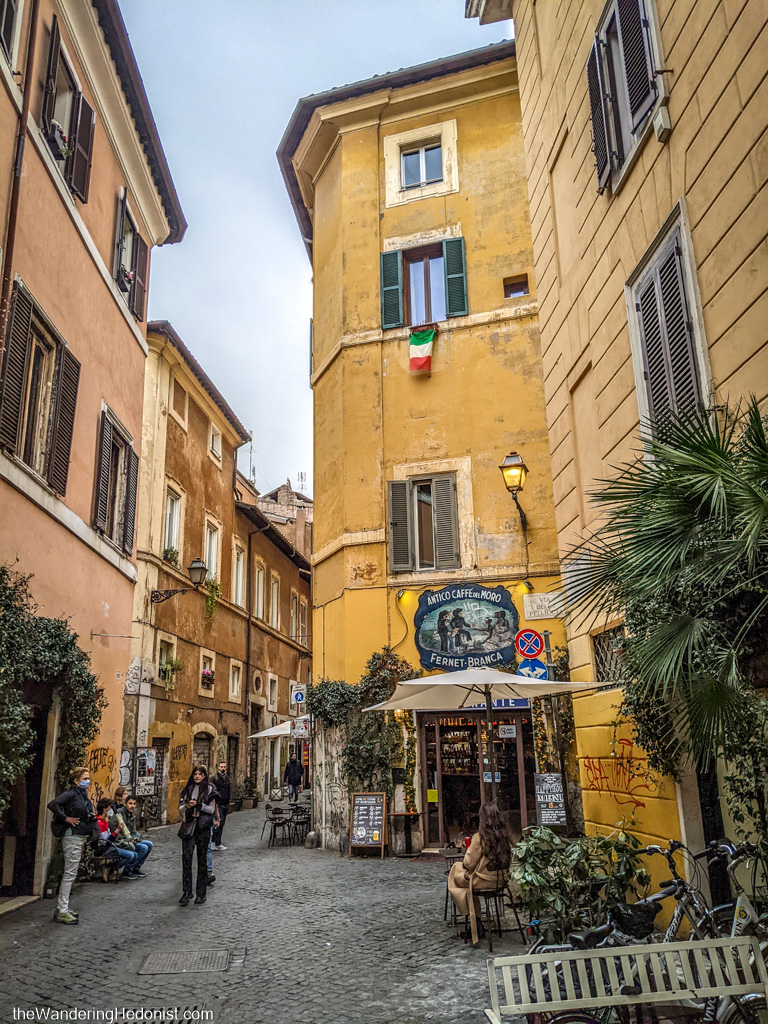
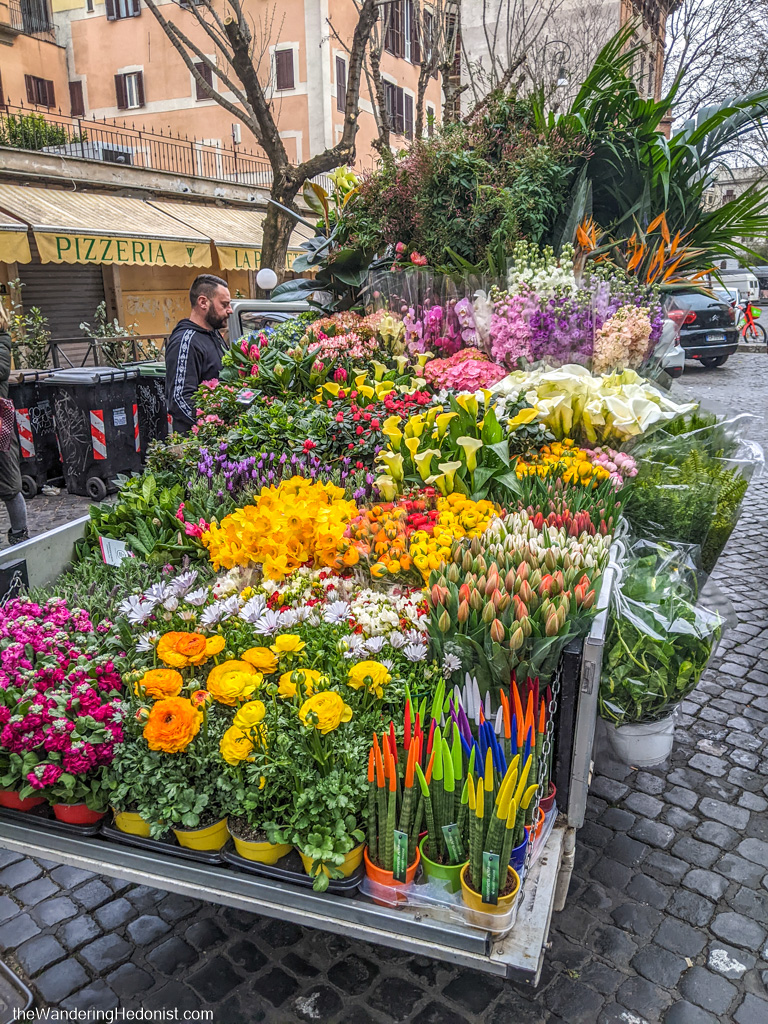


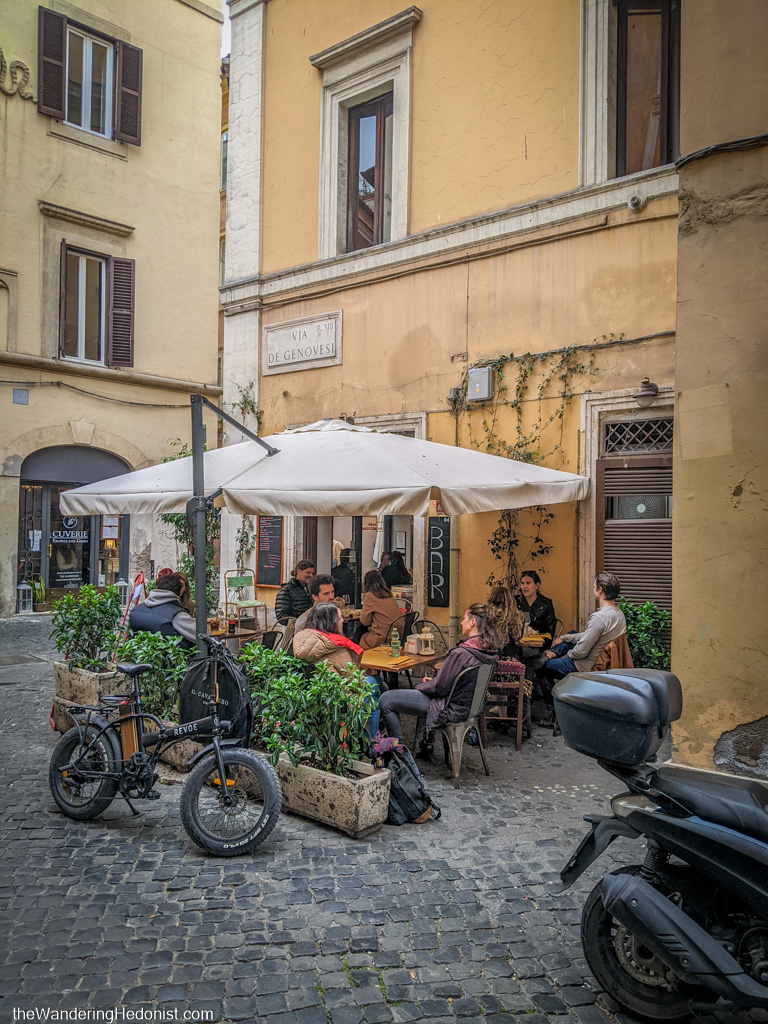
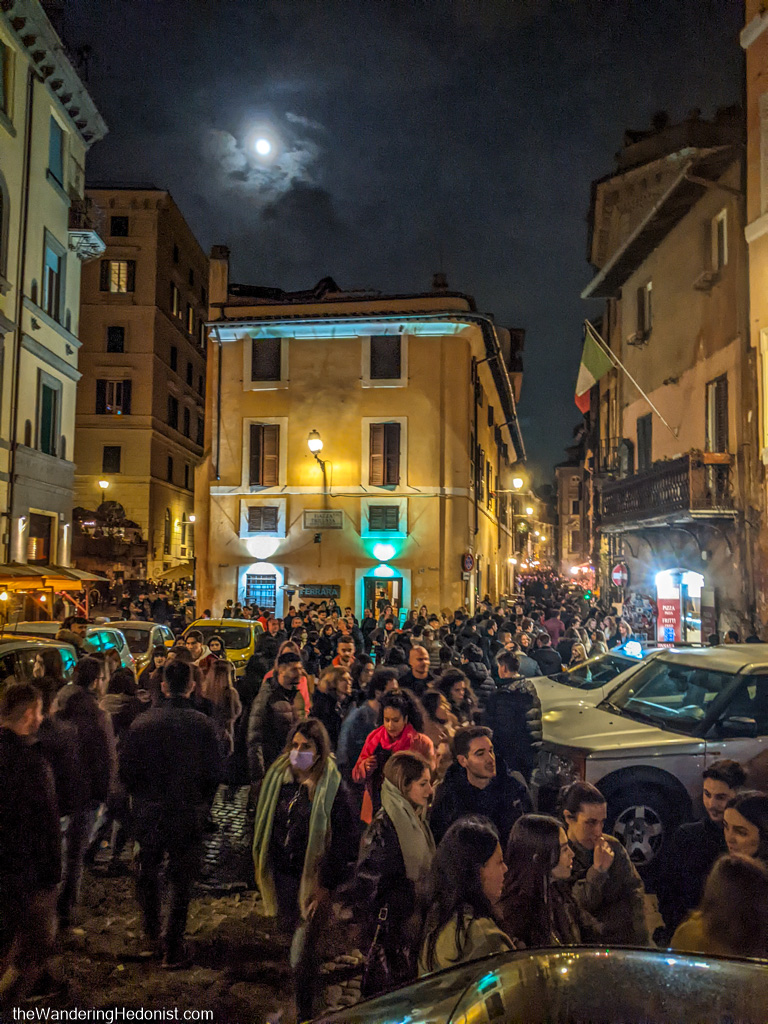



Small cars!
Anyone who knows me, knows my delight for small or unusual vehicles. And Rome does not disappoint. The streets are lined with minicompact and microcars, making a subcompact car look like indulgent silliness. But in Rome I discovered an even smaller car that makes the Smart Car look roomy in comparison. The Renault Twizy. Classified as a light or heavy quadracycle in either a 45 and 80 model corresponding to its max speed in km/h (28 and 50 mph respectively). These cars were absolutely everywhere making them more than just a curiosity.
Of course, you’ll also find one of my favorites, the Piaggio Ape in abundance.
Graffiti in Rome
The volume and quality of graffiti in Rome is exceptional and easily on par with Florence. Especially in the side streets of the Travestere neighborhood where interesting work was ubiquitous. I could spot many of my favorites from Florence here too, all of which seemed to have a couple of years of wear on them, around the time we had to flee Italy from covid. I especially loved the mural of Elena Fabrizi or colloquially “Sora Lella”, a local chef (Trattoria Sora Lella), actor, and television personality who’s career peaked in the 80s.
